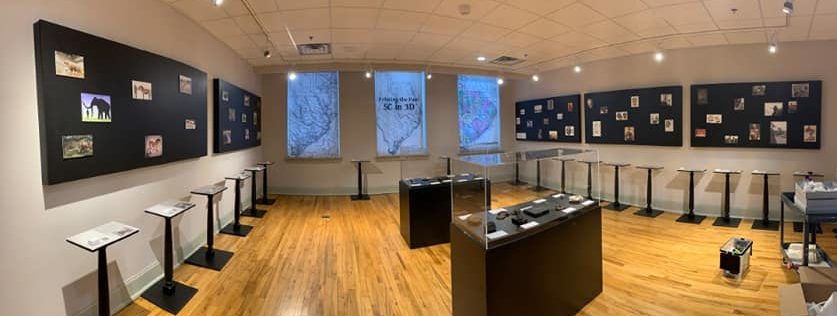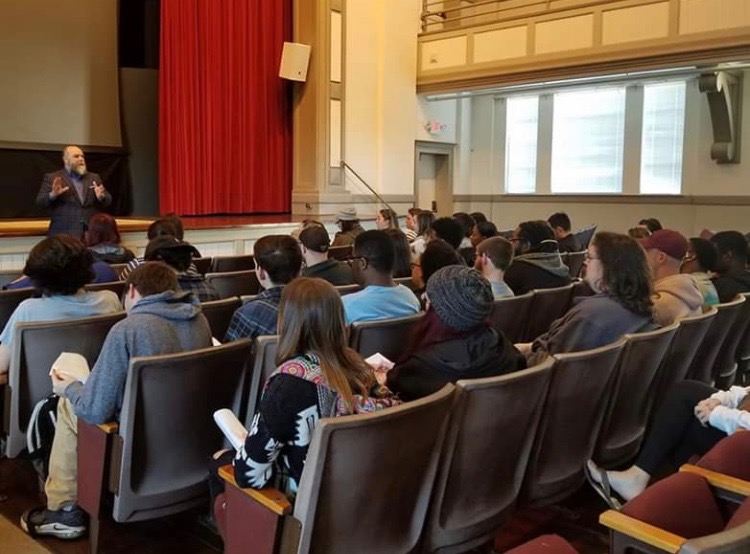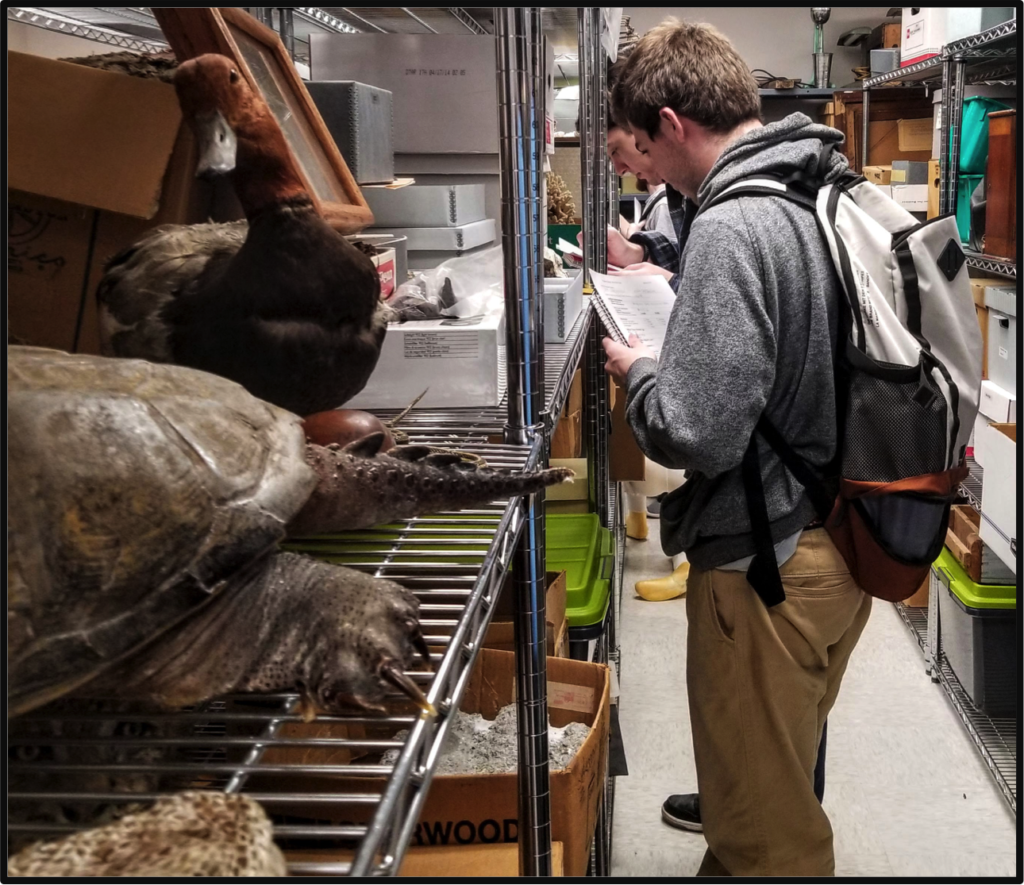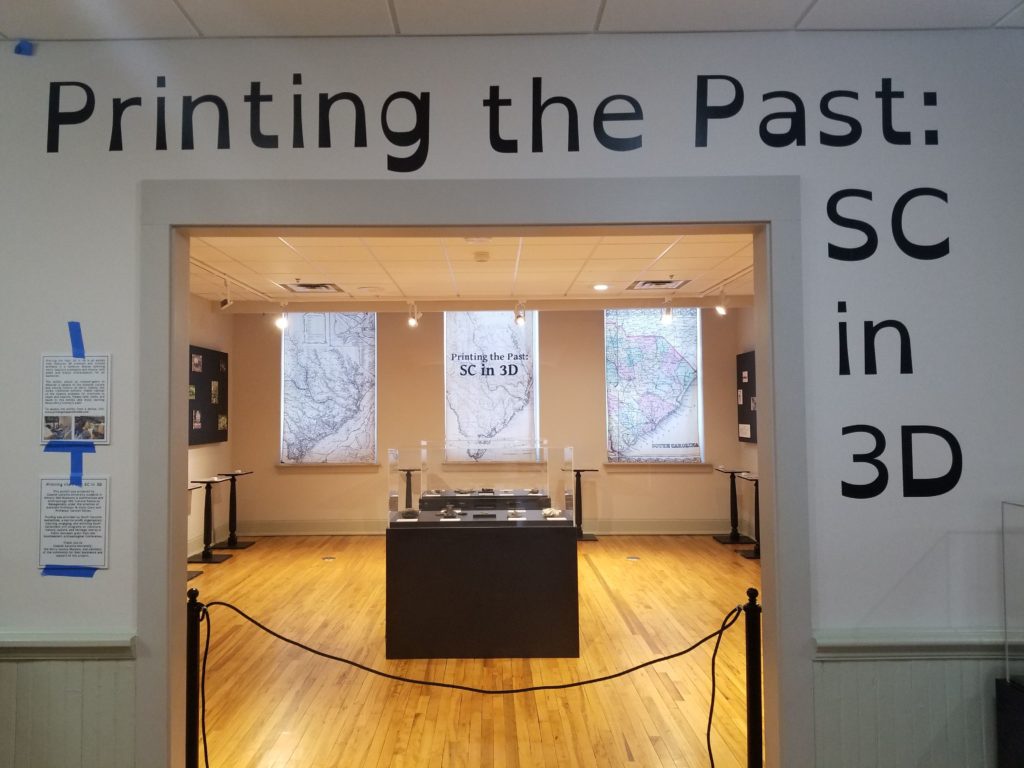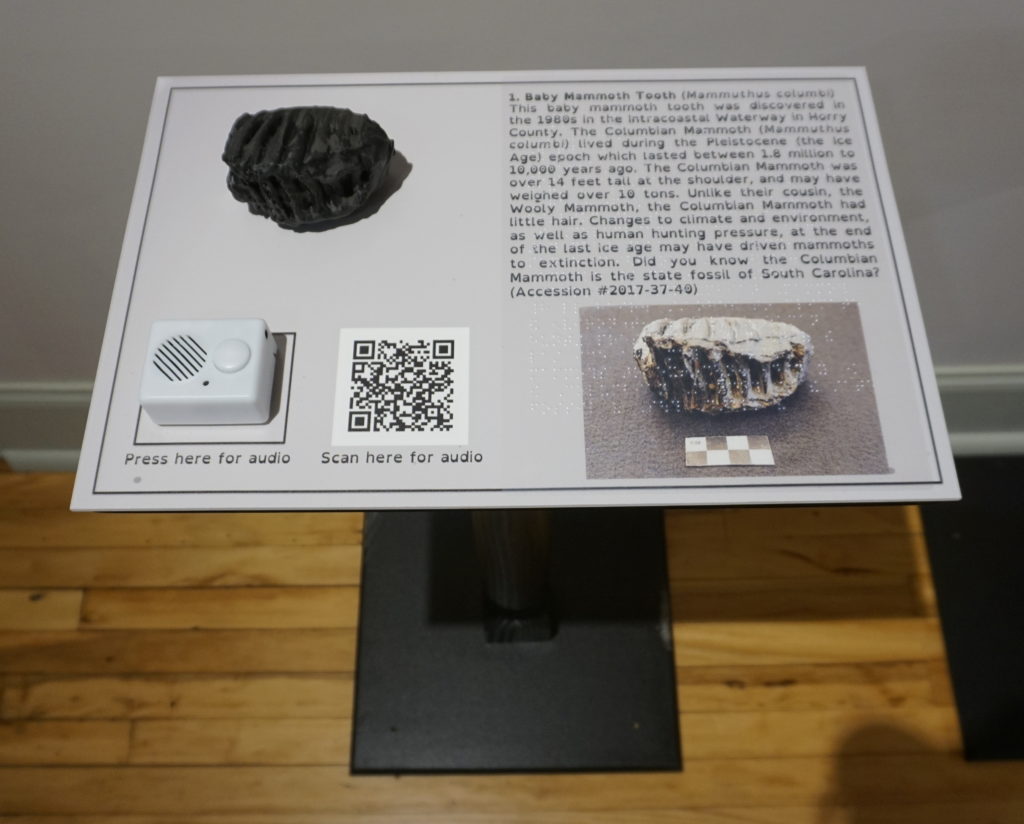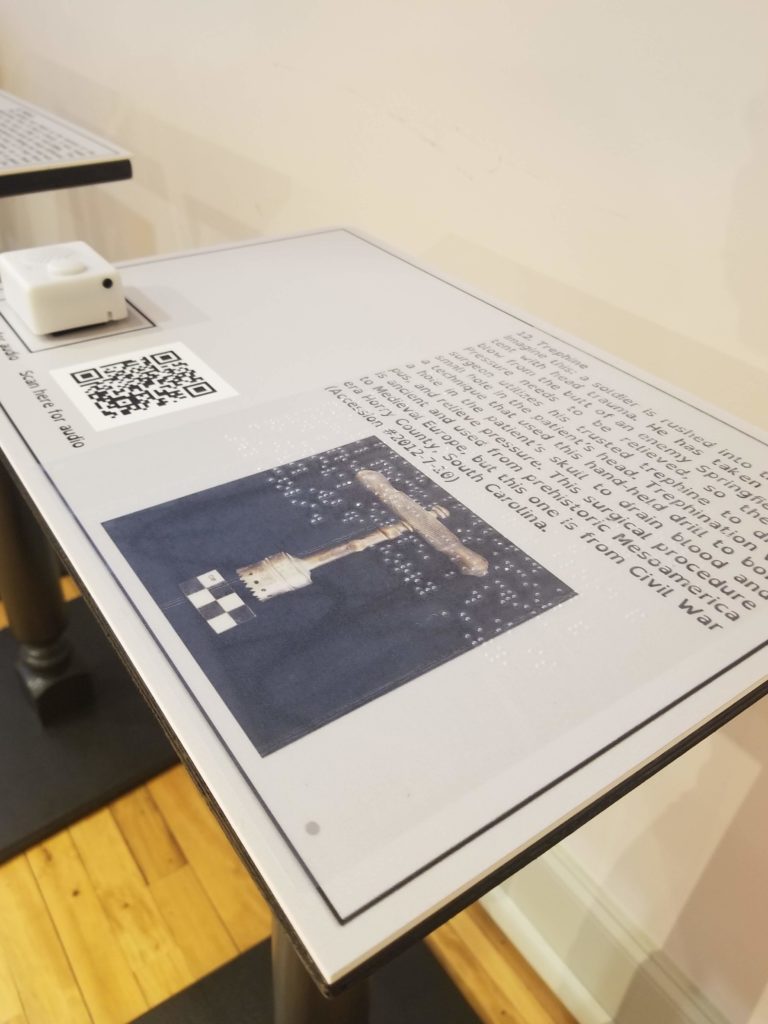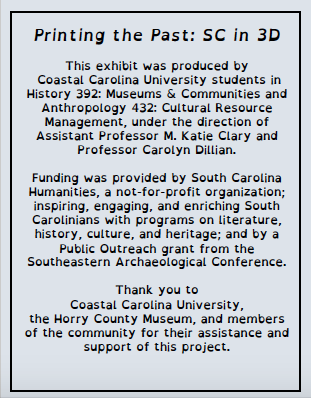Printing the Past: SC in 3D Exhibit Video
The Exhibit
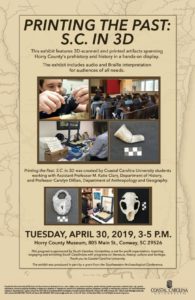
Printing the Past: SC in 3D is an exhibit that features 3D scanned and printed artifacts in a hands-on display spanning Horry County’s prehistory and history, with audio and braille interpretation for all audiences at the Horry County Museum.
The exhibit allows all museum-goers to discover a sample of the material culture and natural history of Horry County, but unlike traditional exhibits, makes replicas of the objects available for everyone to touch and explore.
Though you cannot touch the artifacts in this digital format, please read, listen, and explore this online exhibit and enjoy learning about Horry County’s past!

